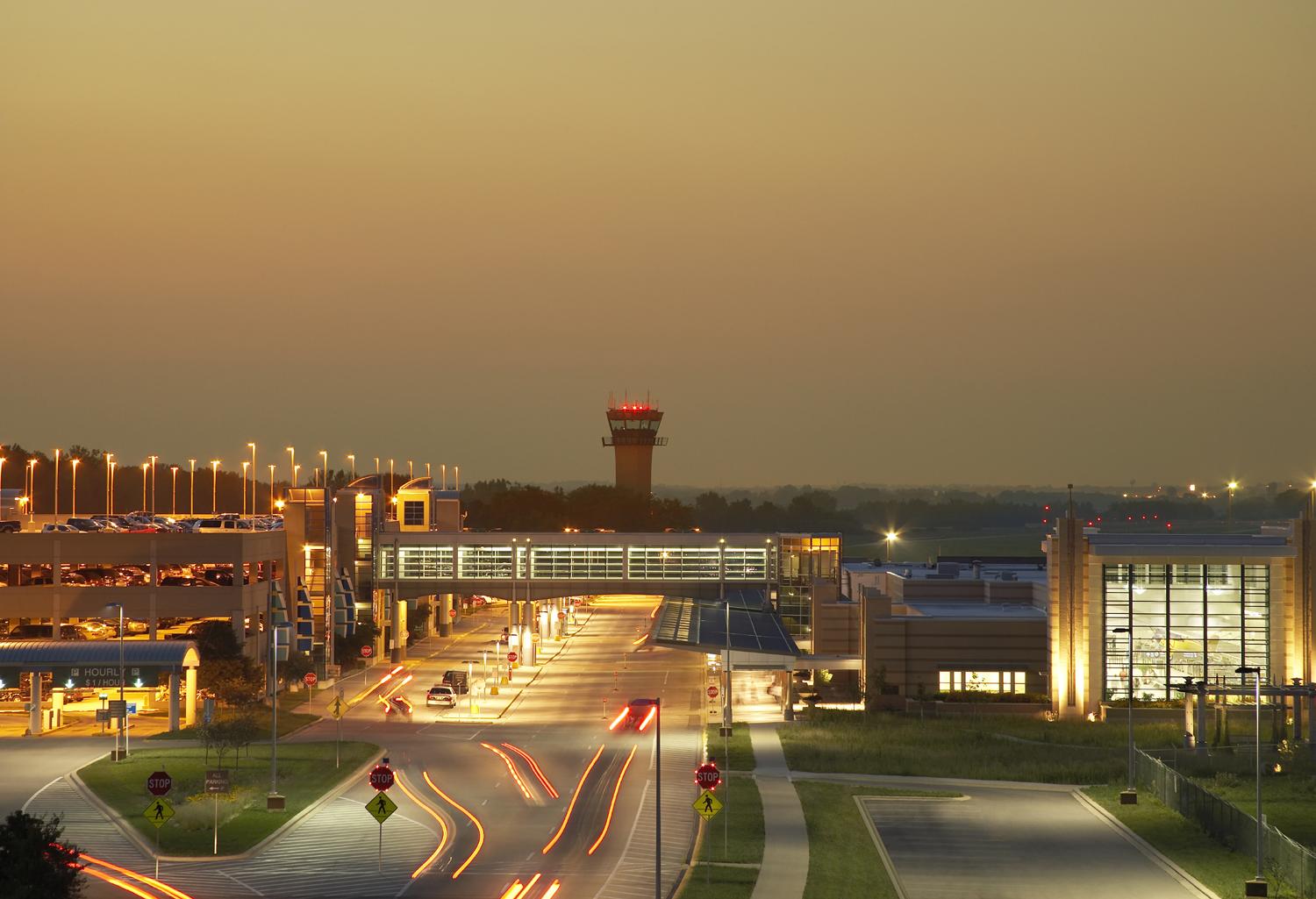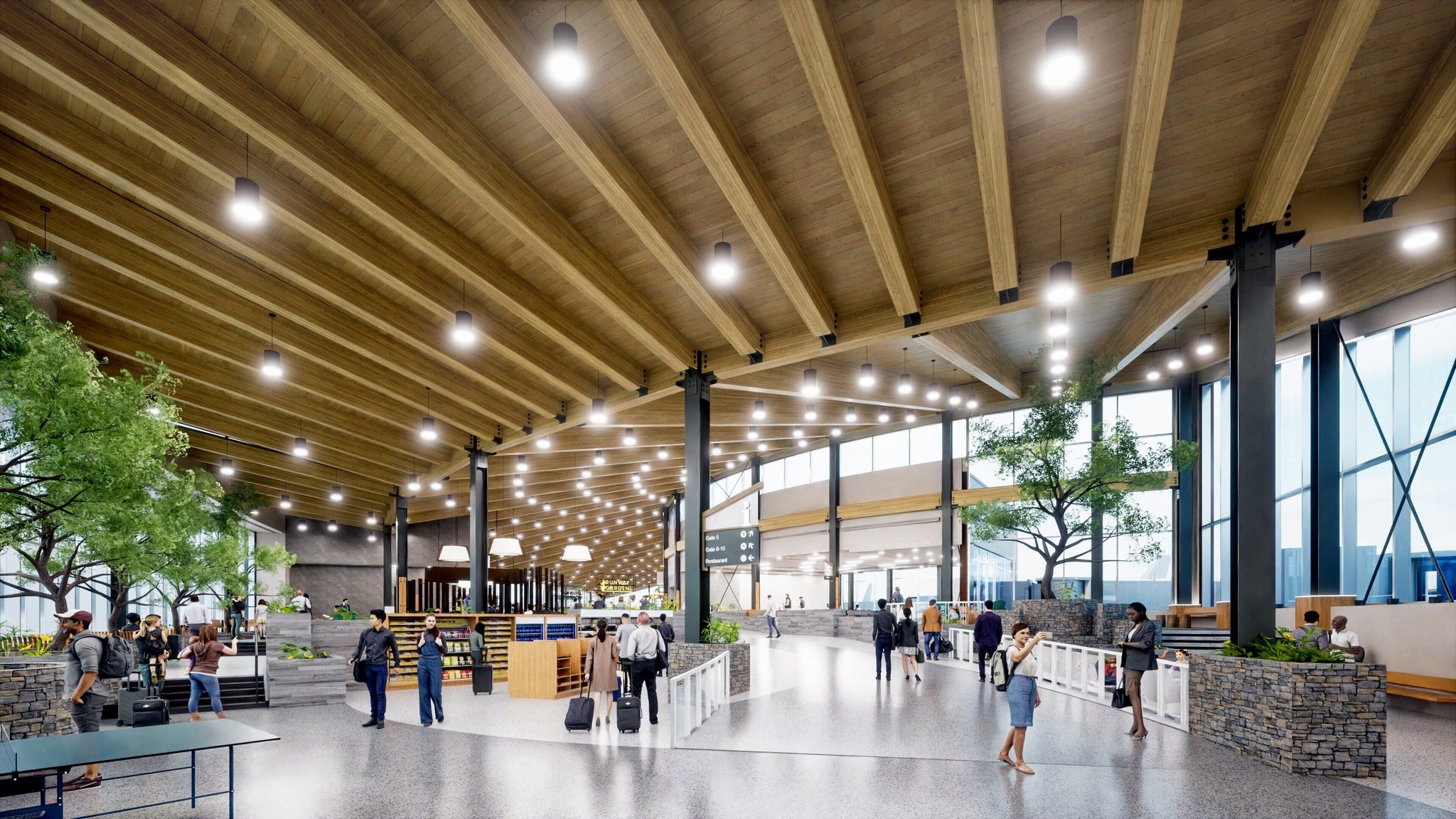Appleton International Airport had its busiest year ever in 2022, and it hopes to build off that momentum in the new year.
The airport released an end-of-year report in December, detailing its progress. Appleton International Airport saw more than 850,000 passengers in 2022, up from 720,083 the previous year.
Officials say last year helped cement Appleton’s position as the third-busiest airport in Wisconsin — behind only Dane County Regional Airport and Milwaukee Mitchell International Airport. And aviation traffic in Appleton last year exceeded pre-pandemic levels by 28.4 percent.
Stay informed on the latest news
Sign up for WPR’s email newsletter.
Appleton International Airport Director Abe Weber said he expects the airport to remain busy in 2023.
“Last year we saw 20 percent growth,” he said. “I don’t know that ’23 will be 20 percent growth, but we certainly think that we will see growth in ’23. We have a lot of opportunities.”
The increased traffic at Appleton International Airport has been building for several years. In 2018, it surpassed Green Bay as the third-busiest airport in Wisconsin and was named the fourth-fastest growing airport in the country by Bloomberg.
Outagamie County Executive Tom Nelson said Appleton International Airport generates $800 million of economic activity each year, supporting about 3,000 jobs. The airport is a department of Outagamie County, but receives no revenue from property taxes.
Nelson said the airport’s success is due, in large part, to the collaboration between the county, the private sector, the local school district, Fox Valley Technical College and other stakeholders.
“The most significant accomplishment that we have made in the last several years is that we were growing, and we were doing well during a pandemic,” he said. “In fact, we were adding commercial air service during a pandemic.”
In March 2022, Allegiant Air began utilizing Appleton International, flying two Airbus 320 airplanes in and out of the airport. Each Airbus seats up to 186 passengers. In October, Allegiant added a third Airbus to its Appleton operation.
Weber said Allegiant’s investment in Appleton is a big reason why the airport saw leisure travel increase.
“That provided quite a boost to the leisure component,” he said. “But we also saw our carriers — like American, Delta and United — bring back many of the flights that might have gone away or were put on pause during the pandemic.”
Increased traffic at Appleton International Airport has spurred expansion efforts to help the airport handle the growth of passenger traffic at its commercial airport and private airfield, including nearly $40 million worth of infrastructure improvements. That funding is almost entirely from grants, with 84 percent coming from federal grants and 9 percent from state grants.
Two of the major projects include an expansion of the concrete ramp used for planes landing and taxiing to accommodate increased air traffic and larger planes, as well as building a third hangar at the Appleton Flight Center facility for private aircraft. Construction on the ramp is set to begin this year, while construction on the new hangar started last year.
The airport is also working on projects to improve the experience for passengers, including adding two boarding gates and upgrading the parking system.
Other infrastructure projects include expanding the commercial terminal ramp to accommodate future growth, expanding the service road for refueling airplanes and expanding the road that connects to the airport’s business park to enhance access for future development.
Weber said enhancing access to the business park will help spur future growth, which will boost the airport’s economic value to the community.
“The large hangars constructed in that area generate aerospace jobs, (employing) skilled technical workers who typically bring with them a nice family-supporting paycheck, and it provides real nice economic value to our community,” he said.
Private partnerships in the airport’s business park have been crucial to its growth, Weber said. Because the airport is not supported by tax funds, it relies on rent from users for much of its revenue.
Before Nelson became county executive, he said the county decided to diversify revenue streams by turning the airport into “a mega business park.”
That gives the airport revenue from commercial air service, as well as from partnerships with companies such as Gulfstream Aerospace and Air Wisconsin, Nelson said.
So far, he says the experiment has paid off.
“The Appleton International Airport is the most important piece of economic real estate in northeast Wisconsin,” Nelson said.
The airport was recently reclassified as a “small-hub airport,” which recognizes its growth in passengers and flights. That better positions the airport to compete for federal grants and elevates its status with major airlines, Weber said.
“It’s great for us to attain that status, and we’re very proud of it,” he said. “We’re going to work very hard to keep it and keep growing our air service product here.”
Wisconsin Public Radio, © Copyright 2025, Board of Regents of the University of Wisconsin System and Wisconsin Educational Communications Board.





